CONFEDERATE MEMORIAL DAY Daughters of Confederacy CSA Soldier Civil War VETERAN
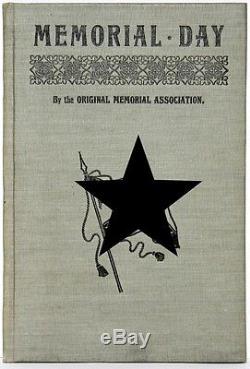

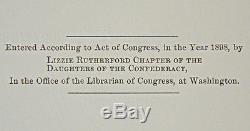
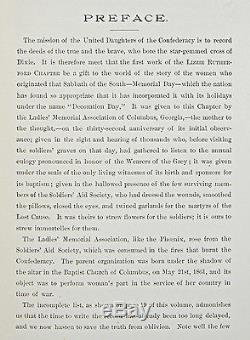
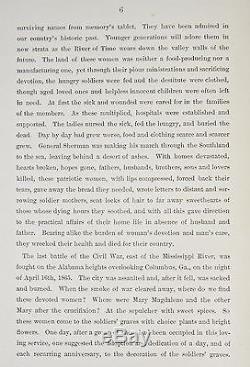
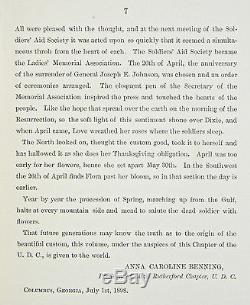
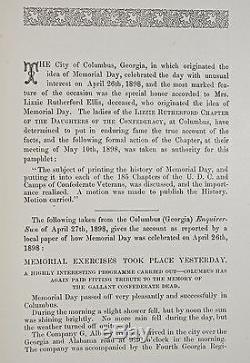
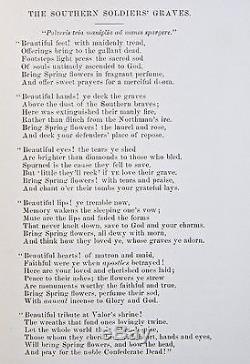
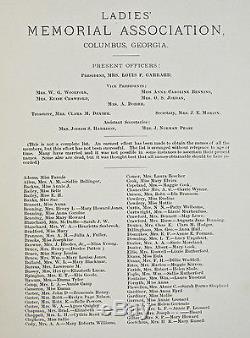
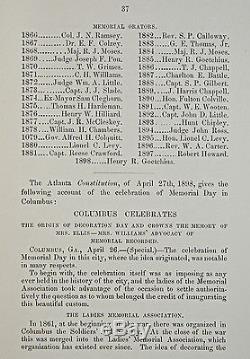

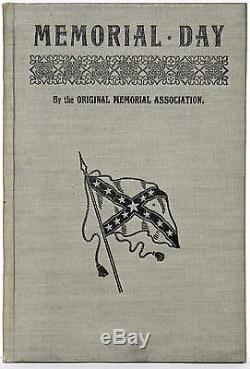

GET IT WHILE YOU CAN!! PLEASE NOTE: The cover of this book has been censored. To conceal a flag that is offensive to some.
The big black star does NOT appear on this book. Y OU'LL LOVE THIS BOOK!!
In the spring of 1866 the Ladies Memorial Association of Columbus, Georgia passed a resolution to set aside one day annually to memorialize the Confederate dead. Additionally, the secretary of the association, Mrs.
(Mary Ann) Williams was directed to author a letter inviting the ladies in every Southern state to join them in the observance. The letter was written in March 1866 and sent to all of the principal cities in the South, including Atlanta, Macon, Montgomery, Memphis, Richmond, St. Louis, Alexandria, Columbia, and New Orleans. The date for the holiday was selected by Mrs.
She chose April 26, the first anniversary of Confederate General Johnston's final surrender to Union General Sherman at Bennett Place, NC. For many in the South, that marked the official end of the Civil War. Relationship to current national Memorial Day. In 1868, General John A. Logan, who was the commander in chief of the Union Civil War Veterans Fraternity called the Grand Army of the Republic (GAR), launched the Memorial Day holiday that is currently observed in the entire United States. According to General Logan's wife, he emulated the practices of Confederate Memorial Day.She wrote that Logan said it was not too late for the Union men of the nation to follow the example of the people of the South in perpetuating the memory of their friends who had died for the cause they thought just and right. The Columbus, Georgia chapter of the United Daughters of the Confederacy was established on May 6, 1896 as Chapter 60 of the UDC with 10 charter members, including Mrs. The members voted on April 26, 1898 to change its name to the Lizzie Rutherford Chapter in honor of Lizzie Rutherford Ellis, who in 1866 had proposed setting aside a day of memory of the Confederate dead. This idea inspired the annual observation of Confederate Memorial Day. Miss Anna Caroline Benning was elected president of the newly named chapter, which had grown to 47 members.
Prominent women have been affiliated with the Georgia Division of the UDC since its founding. Although Lizzie Rutherford did not live long enough to be part of the UDC, she is nonetheless closely associated with the organization. In 1898 the Lizzie Rutherford Chapter of Columbus took the name of the local citizen who had pioneered the practice of decorating Confederate soldiers' graves in the years immediately after the war. This annual event became known as Confederate Memorial Day, and UDC members joined thousands of people all across the South to visit graves, decorate headstones with flowers, and hold eulogy services.
PREFACE BY ANNA CAROLINE BENNING. Camp Benning (FORT BENNING) was established in 1918 after the Infantry School moved to Columbus from Fort Sill, Okla. It was named after Brigadier Gen.
Henry Lewis Benning, a Confederate Army general and Columbus native. Anna Caroline Benning, the daughter of Henry Benning, raised the first American flag over the post.
Ninety-two years later it is still a training facility primarily for infantry soldiers. Fort Benning is now also a power projection platform capable of deploying combat-ready forces anywhere in the world on short notice by air, rail and highway. P ublished in 1898, this book is in VERY GOOD CONDITION for any age and especially to be 118 YEARS OLD!!! And tightly bound with NO TEARS!!! It measures 6" X 8 1/2" and is complete with all 42 pages so... For a great deal and you might WIN!! Please see our other books too! The item "CONFEDERATE MEMORIAL DAY Daughters of Confederacy CSA Soldier Civil War VETERAN" is in sale since Friday, May 27, 2016.This item is in the category "Books\Antiquarian & Collectible". The seller is "rebel_soldier" and is located in Cameron, North Carolina.
This item can be shipped worldwide.- Binding: Hardcover
- Year Printed: 1898
- Topic: Civil War (1861-65)
- Origin: American
- Subject: Military & War
- Special Attributes: 1st Edition
- Author: LIZZIE RUTHERFORD CHAPTER OF UDC
- Original/Reproduction: Original
- Publisher: THOS. GILBERT, PRINTER AND MANUFACTURING STATIONER
- Country/Region of Manufacture: United States
- Original/Facsimile: Original
- Language: English
- Place of Publication: COLUMBUS, GEORGIA
- Region: North America
- Character Family: CONFEDERATE STATES OF AMERICA

